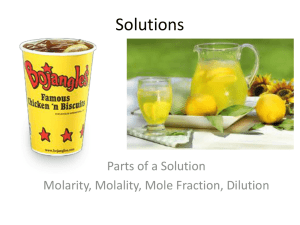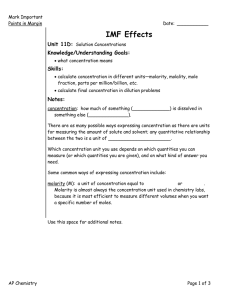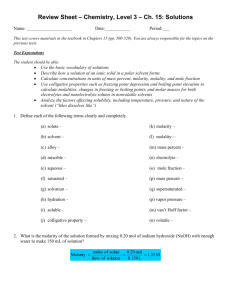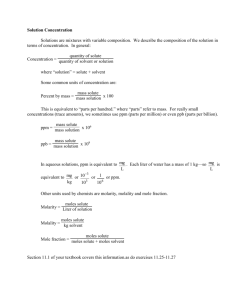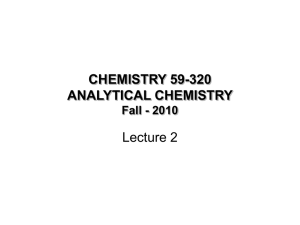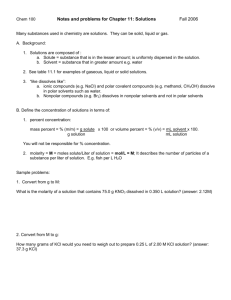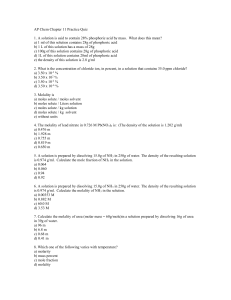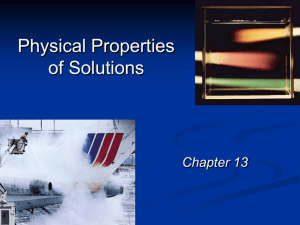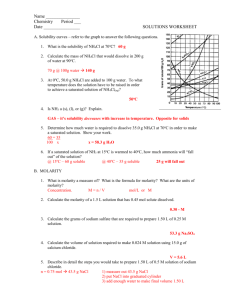Chemistry Solutions Review Sheet - High School Level 2
advertisement
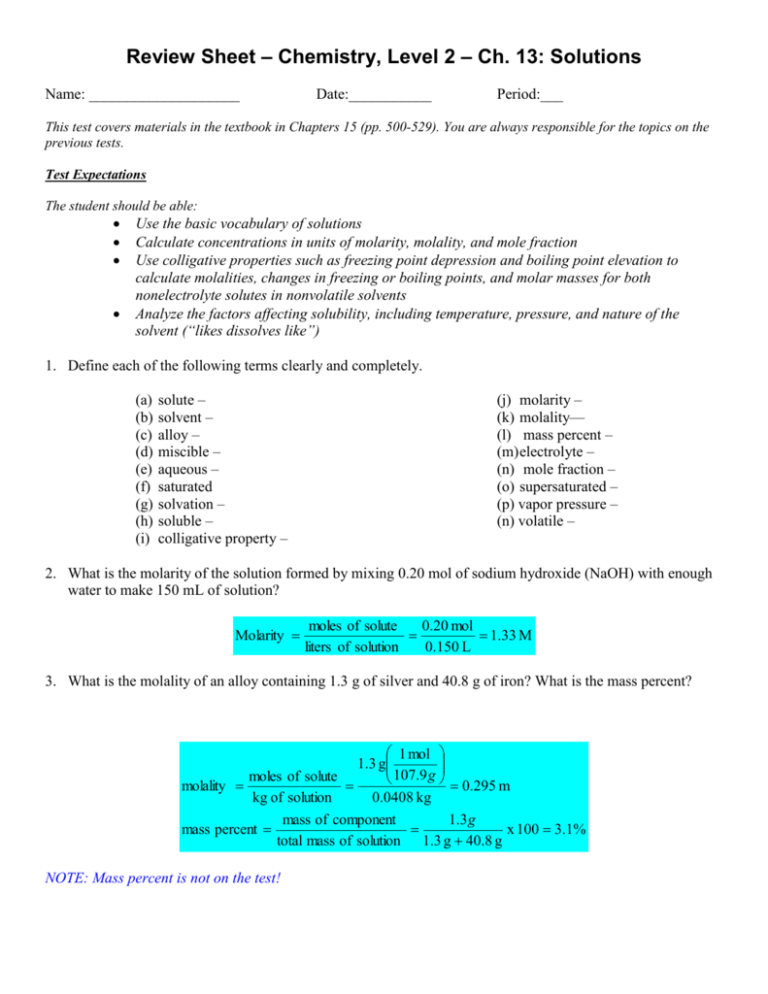
Review Sheet – Chemistry, Level 2 – Ch. 13: Solutions Name: ____________________ Date:___________ Period:___ This test covers materials in the textbook in Chapters 15 (pp. 500-529). You are always responsible for the topics on the previous tests. Test Expectations The student should be able: Use the basic vocabulary of solutions Calculate concentrations in units of molarity, molality, and mole fraction Use colligative properties such as freezing point depression and boiling point elevation to calculate molalities, changes in freezing or boiling points, and molar masses for both nonelectrolyte solutes in nonvolatile solvents Analyze the factors affecting solubility, including temperature, pressure, and nature of the solvent (“likes dissolves like”) 1. Define each of the following terms clearly and completely. (a) (b) (c) (d) (e) (f) (g) (h) (i) solute – solvent – alloy – miscible – aqueous – saturated solvation – soluble – colligative property – (j) molarity – (k) molality— (l) mass percent – (m) electrolyte – (n) mole fraction – (o) supersaturated – (p) vapor pressure – (n) volatile – 2. What is the molarity of the solution formed by mixing 0.20 mol of sodium hydroxide (NaOH) with enough water to make 150 mL of solution? Molarity moles of solute 0.20 mol 1.33 M liters of solution 0.150 L 3. What is the molality of an alloy containing 1.3 g of silver and 40.8 g of iron? What is the mass percent? 1 mol 1.3 g 107.9 g moles of solute molality 0.295 m kg of solution 0.0408 kg mass of component 1.3 g mass percent x 100 3.1% total mass of solution 1.3 g 40.8 g NOTE: Mass percent is not on the test! 4. A gas mixture contains 26.3 g of nitric oxide (NO) and 36.2 g of oxygen gas. What is the mole fraction of the nitric oxide? 1 mol 26.3 g 30.0 g moles of component mole fraction X NO 0.437 total moles of solution 1 mol 1 mol 36.2 g 26.3 g 30.0 g 32.0 g 5. An evil villain attempts to create 250 mL of a 4.7 M solution of potassium cyanide (KCN) to use against his archenemy (the mutated sea bass are on vacation). The evil genius never finished all six years of evil medical school and cannot complete the calculations without help. How many grams of KCN does the evil genius need? moles of solute moles 4.7 M liters of solution 0.250 L 65.1 g moles 4.7 M * 0.250 L 1.2 moles 78.1 g 1 mole Molarity 6. What is the boiling point elevation of a solution containing 125 g of the ethylene glycol (C2H6O2) in 1200 g of water. Kb for water is .52 C/m. 1 mol 125 g 62.0 g moles of solute molality 1.68 m kg of solution 1.200 kg ΔTb K b m (1.68m)(0. 52 C/m) 0.87 C 7. What is the freezing point depression of a solution containing 45.9 g of the sugar (C6H12O6) in 1300 g of water. Kf for water is 1.86 C/m. 1 mol 45.9 g 180.0 g moles of solute molality 0.196 m kg of solution 1.300 kg ΔTf K f m (0.195m)(1 .86 C/m) 0.364 C 8. What is the boiling point elevation of a solution containing 45.9 g of the electrolyte CaCl2 in 1300 g of water. Kb for water is 0.52 C/m. 1 mol 45.9 g 111.1g moles of solute molality 0.318 m kg of solution 1.300 kg ΔTb iK b m (3)(0.318m)(0 .52 C/m) 0.50 C 9. Check the box for the solvent that is most likely to dissolve the solute in each row. Solute\Solvent C12H24 CaCl2 Engine grease Pentane (C5H10) X Ethyl Alcohol (C2H5OH) X X 10. A jar contains the chemical acetic acid (HC2H3O2). a. Is it polar or nonpolar? POLAR b. Will it mix evenly with water, a polar solvent? yes c. What other substances might dissolve in this chemical? acetone, alcohols
